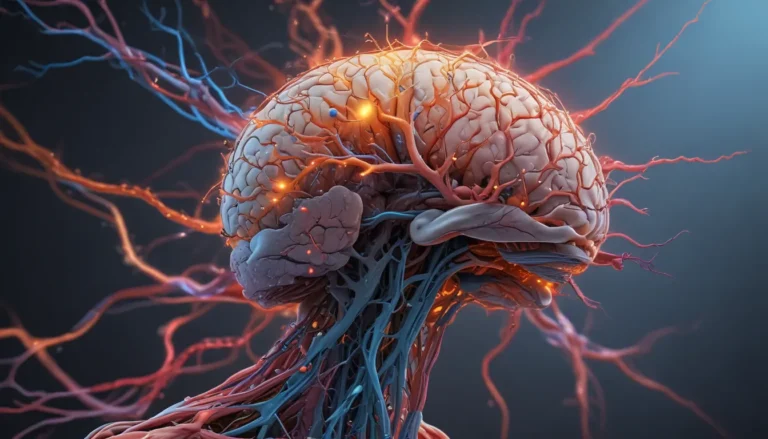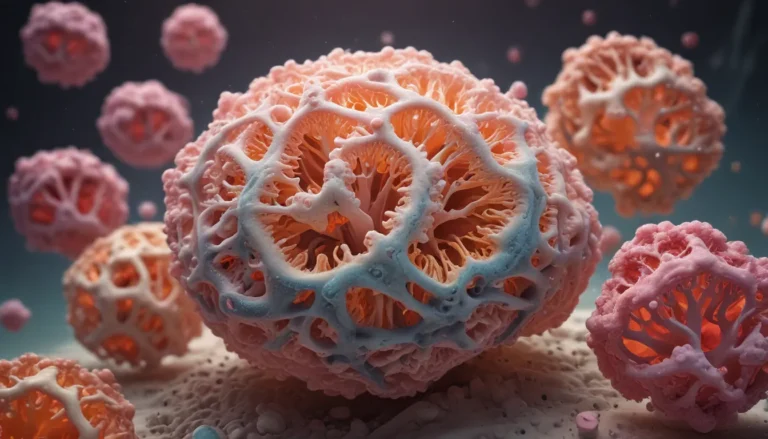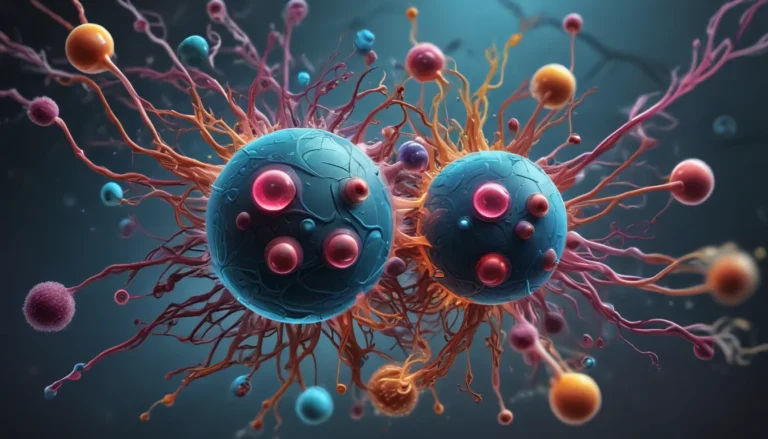A Note About Images: The images used in our articles are for illustration purposes only and may not exactly match the content. They are meant to engage readers, but the text should be relied upon for accurate information.
As we go about our daily lives, we often take for granted the incredible machinery that keeps our bodies running smoothly. Our organs, from the brain to the heart to the skin, work tirelessly behind the scenes to ensure our survival and well-being. In this article, we will delve into the captivating world of organs and explore 20 astounding facts that will leave you in awe of the human body’s capabilities.
Appreciating the Wonders of Organs
Our organs are like the stars of a complex symphony, working together harmoniously to keep us healthy and alive. Each organ performs its own remarkable functions, from the brain’s intricate cognitive processes to the heart’s essential pumping action. Let’s take a closer look at some key takeaways about these awe-inspiring biological marvels.
- The human body’s organs, such as the brain, liver, and heart, work together to ensure our survival and well-being, performing remarkable functions that keep us healthy and alive.
Unveiling the Marvels of Specific Organs
The Intricate Human Brain
The human brain is the crown jewel of our organs, boasting a complex network of neurons and synapses that enable us to engage in cognitive processes like thought, memory, and emotion.
The Mighty Liver
Nestled in the upper right side of the abdomen, the liver is the largest internal organ in our bodies. This multitasking organ handles detoxification, metabolism, and the production of bile with finesse.
The Skin’s Protective Role
Covering our bodies from head to toe, the skin is not just a defense against external threats. It regulates body temperature and allows us to experience sensations like touch, pressure, and pain.
The Essential Heart
Our heart, the tireless engine of life, beats approximately 100,000 times a day, ensuring that oxygen-rich blood is circulated throughout our bodies to nourish our cells and remove waste products.
The Vital Lungs
Beneath the surface, our lungs contain around 300 million tiny air sacs called alveoli. These minuscule structures facilitate the exchange of oxygen and carbon dioxide, supporting the body’s vital respiratory process.
Nurturing Your Body’s Engine
Kidneys and Small Intestine
The kidneys work tirelessly, filtering about 150 to 180 liters of blood daily to remove waste and maintain a healthy balance of fluids. Meanwhile, the small intestine, spanning about 7 meters in length, is the epicenter of nutrient absorption in our digestive system.
The Pancreas and Spleen
The pancreas steps in to produce insulin, a crucial hormone that regulates blood sugar levels. On the other hand, the spleen serves as a vital player in our immune system, filtering out aged red blood cells and storing a reserve of blood for emergencies.
The Gallbladder and Uterus
While the gallbladder stores and releases bile to aid in digestion, the uterus undergoes a remarkable transformation, expanding up to 500 times its normal size during pregnancy to protect and nurture a growing fetus.
The Symphony of Hormones
Adrenal Glands and Thyroid Gland
Nestled atop our kidneys, the adrenal glands churn out hormones that regulate metabolism, immune function, and stress responses. Meanwhile, the thyroid gland secretes hormones crucial for metabolism, growth, and development.
The Dynamic Pituitary Gland
Often referred to as the “master gland,” the pituitary gland orchestrates hormone release throughout the body, exerting influence over growth, metabolism, reproduction, and other vital functions.
Embracing the Microscopic Helpers
Gut Microbiota and T-Cells
Delving into the microcosm of our bodies, we find trillions of beneficial bacteria in our intestines known as the gut microbiota. These microbes are instrumental in digestion, immune function, and overall health. Meanwhile, the thymus gland in our chest takes center stage in nurturing T-cells, pivotal white blood cells essential for our immune response.
Reflecting on the Miracles Within
Our organs are not just individual entities but interconnected components of a grand symphony that sustains life. From the skeleton’s support to the thymus gland’s immune function, each organ plays a unique role in our well-being. These remarkable biological structures deserve our admiration and care, serving as testaments to the wonders of nature and the intricacies of life.
Whether we marvel at the coordination of organs during a simple task or the resilience of our bodies in times of challenge, we owe a debt of gratitude to these unsung heroes within us. Let us take a moment to acknowledge and appreciate the astounding organs that enable us to think, breathe, digest, and thrive.
Inquisitive Minds Want to Know
As we journey through the realm of organs, curiosity inevitably leads us to seek answers to burning questions. Here are some FAQs that shed light on the fascinating world of organs and their functions:
-
What is an organ?
An organ is a specialized group of tissues that performs a specific function in the body, such as the heart, lungs, liver, and brain. -
How many organs are in the human body?
The human body houses 79 organs, encompassing primary and secondary organs vital for our well-being. -
Can organs regenerate?
While some organs possess the remarkable ability to regenerate, not all organs share this capacity, showcasing the diversity of our bodily systems. -
What is the largest organ in the human body?
The skin takes the crown as the largest organ, acting as a protective shield for our internal organs and tissues. -
What is the smallest organ in the human body?
Deep within the brain lies the pineal gland, claiming the title of the smallest organ in our intricate biological landscape. -
Can you live without certain organs?
While some organs are indispensable for survival, others can be functionally impaired or removed without immediate fatal repercussions. -
How do organs communicate with each other?
By employing chemical and electrical signals, organs establish a sophisticated communication network that allows for coordination and regulation of bodily functions. -
Can you donate organs while alive?
Living organ donation, such as donating a kidney or part of the liver, offers individuals the opportunity to save lives and make a meaningful impact on others. -
Can diseases affect multiple organs?
Indeed, numerous diseases can target multiple organs, disrupting their normal functions and prompting a cascade of health challenges. -
How can I keep my organs healthy?
Upholding a healthy lifestyle, characterized by regular exercise, a balanced diet, and avoidance of harmful substances like tobacco and alcohol, forms the foundation for promoting overall organ health.
Embracing the Tapestry of Life
In our exploration of organs, we uncover a tapestry of interconnected systems that sustain our existence and enable us to thrive. Each organ, whether large or small, plays a pivotal role in the symphony of life, weaving together a narrative of resilience, adaptability, and wonder. As we deepen our understanding of these biological marvels, let us nurture a sense of gratitude and awe for the intricate mechanisms that drive the human body’s remarkable journey.
So, the next time you marvel at your body’s resilience, remember the silent heroes within you—the astounding organs that work tirelessly to keep you alive and well. With every heartbeat, every breath, and every thought, these organs humbly carry out their duties, underscoring the remarkable complexity and beauty of the human body.
Delving Deeper Into the World of Organs
As we conclude our journey through the realm of organs, let us not forget that there is always more to explore and discover. Whether you are intrigued by the intricate process of organogenesis, captivated by the mysteries of organic chemistry, or enamored by the intricate relationships between organisms, the world of organs offers a wealth of knowledge waiting to be unearthed.
Was this page helpful?
Our unwavering commitment to delivering accurate and engaging content remains at the core of our mission. Each fact shared on our platform is a testament to the diverse insights contributed by real users like you. Our dedicated editors meticulously review each submission, ensuring that the facts we present are not only captivating but also credible. Trust in our pursuit of quality and authenticity as you join us on a journey of exploration and discovery.
By weaving together the fascinating facts about organs, we embark on a journey of discovery and appreciation for the intricate systems that sustain our lives. As we peer into the kaleidoscope of organs, we are reminded of the beauty, resilience, and complexity of the human body, urging us to nurture a deeper connection with the miracles within us.





